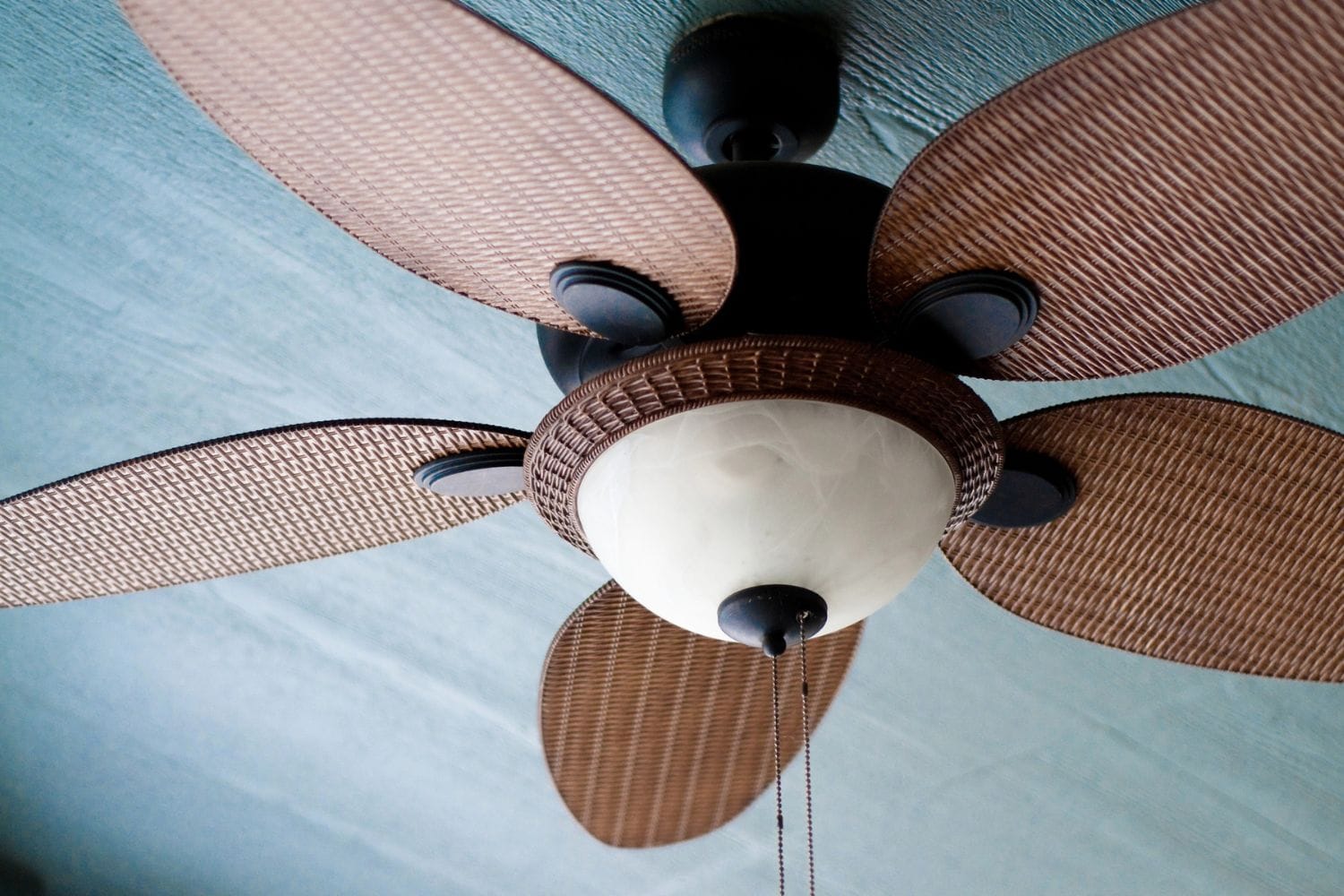Collaborative post
There are many ceiling fans on the market so it can be difficult to discern which is the right one for your home. We will take you on a quick guided tour of modern ceiling fans so you can decide which one is right for you.
Types of ceiling fans
A ceiling fan is made up of just a few components, blades, a motor held inside a housing and apart from flush-mounted fans, a drop rod. This rod sits between the motor housing and the ceiling mount and determines how low the ceiling fan hangs.
The main types of modern ceiling fans are fans with lights, those without lights, flush mounted, standard drop-rod or drop-rod with an angle.
Size of room
The size of the room and the height of your ceiling will determine the size of ceiling fan that you need.
Rooms of 80 sq. ft. or less will need a ceiling fan with a blade span of between 24 – 42 inches. Areas which are between 100 – 150 sq. ft. will need fans with a 44 – 50 inch blade span, while spaces between 150 – 300 sq. ft. will need a whopping 52 – 60 inch blade span.
A standard UK ceiling is just under 8 feet high so you can decide whether to have the fan fitted flush to the ceiling or on a standard short drop-rod. Even if you have a low ceiling, most can still accommodate a ceiling fan if it is low profile and flush mounted.
Sloping ceilings can be tricky. Although it is possible to buy angled ceiling fans most offer a maximum angle of around 34°. If you have a suspended ceiling then the fan will have to be fitted to the solid ceiling above and fitted with a long down rod.
Noise
Most modern ceiling fans are very quiet and even those that are audible can be very soothing, emitting a soft, white noise. However, if you don’t want your ceiling fan to make any noise there are those with extra-quiet operation which are suitable for bedrooms as well as living areas.
Operating features
Operating controls can be via a pull chain, wall controls or more commonly by remote control. Many ceiling fans can be operated in reverse which in colder weather draws warm air down from the ceiling where it naturally moves to and disperses it closer to floor level. This can help to save energy by moving warm air to where it is most needed. Some ceiling fans have a simulated breeze function which varies the speed of the motor to mimic a cooling breeze.
Cost
How much you spend on a ceiling fan will depend on your budget, as well as the size and style that you choose. Prices range from under £100 to over £2,000.
The running cost of a ceiling fan is quite low and typically will be much cheaper than operating an air conditioning unit in the summer. Unless you are installing it yourself ceiling fan costs will need to take into account the purchase price and the cost of a tradesperson to fit it.
Benefits of a ceiling fan:
There are many reasons to install a ceiling fan and they certainly don’t have to be limited to homes in hot climates.
Ceiling fans offer the following benefits:
- Airflow within the room both for cooling and for redistributing warm air
- Energy efficient compared to an air conditioner
- Can be used all year round
- Aesthetically pleasing
- Modern ceiling fans are sleek and elegant
- Simple to operate
Style
With so many choices you will have no trouble finding a modern ceiling fan to suit the style and decor of the room. Choose between matching the fan blade colour to your furniture or the motor body to the colour on your walls for a coordinated look. You can also choose from a variety of blade designs and the type of lighting included.

